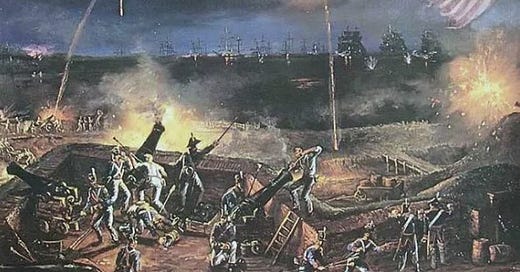Francis Scott Key & the National Anthem
How a poem accidentally became a national symbol
July 4 is a special day for Americans. It is the anniversary of the day when the Founders adopted the Declaration of Independence in 1776. Instantly after that event, the day became special. Even George Washington celebrated, as military parades were given!
Nearly 250 years later, this day remains significant. It is a reminder of how a young country came to be—how colonists decided to break ties with an Empire that mistreated them. While those feuds are in the past, and there is now friendship between America and England, Independence Day never loses its significance.
(There are still plenty of good-natured memes creating humor around our ‘divorce’ from England!)
Every year, Independence Day offers us a unique opportunity to show patriotism. Many Americans do this by displaying the flag on their lawns—and everywhere else! You would be hard-pressed to find a street that doesn’t have this symbol out, in some form.
The Story of the Flag
I’ve read and reviewed the book Flag by Marc Leepson. If you’re interested in learning how the red, white, and blue banner was created, his book is a worthwhile read.
Check out my post about it here!
Flag offers an explanation for the reverence we have for this banner:
A quote from Henry Ward Beecher in 1861 on the eve of the Civil War sums up this feeling: Our flag carries American ideas, American history and American feelings. It is not a painted rag. It is a whole national history. It is the Constitution. It is the Government. It is the emblem of sovereignty of the people. It is the NATION.
Our flag is the most common visual symbol of patriotism. It’s almost always paired with a song. “The Star-Spangled Banner” is difficult to sing, yet people attempt it, anyway. It’s a song about victory, making it suitable for Independence Day.
Keep reading with a 7-day free trial
Subscribe to The Tearoom to keep reading this post and get 7 days of free access to the full post archives.





